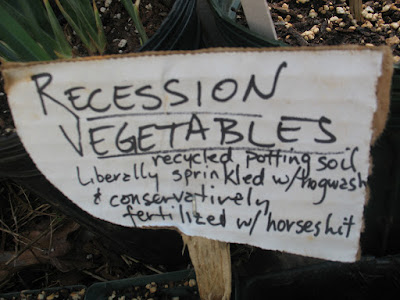 How many of you have ever thought about where those attractive shiitake mushrooms in the grocery store come from? Yeah... me either. I knew mushrooms grew in forests, of course, and in Indiana there are dozens of little Mushroom Festivals that dot the rural countryside during the appropriate seasons, often in quaint little towns that also house adorable Covered Bridge Festivals and Fourth of July Festivals with people dressed in pioneer clothing and a real blacksmith and a guy dressed as Abe Lincoln.
How many of you have ever thought about where those attractive shiitake mushrooms in the grocery store come from? Yeah... me either. I knew mushrooms grew in forests, of course, and in Indiana there are dozens of little Mushroom Festivals that dot the rural countryside during the appropriate seasons, often in quaint little towns that also house adorable Covered Bridge Festivals and Fourth of July Festivals with people dressed in pioneer clothing and a real blacksmith and a guy dressed as Abe Lincoln.The term "mushroom farm", however, was alien to me. Yet logically, there has to be a way to farm mushrooms, because there is just no way that mushroom hunters could find enough wild shiitakes to populate every grocery store in the lower forty-eight.
On Tuesday, I visited Sharondale Farm, a mushroom growing operation, in Keswick, VA - about an hour south of Brightwood. It was part of the CRAFT program, or "Collaborative Regional Alliance for Farmer Training". Basically, a bunch of farms in the region get all their interns/apprentices together and visit one another in order to better educate said interns. There were maybe 15 of us there to learn about the joys of mushroom farming, including myself, Susan, Caitlin, and Robin.*
When we walked into the "Mushroom Forest," it took me a few minutes to realize I was even looking at the mushroom farm part of the business. The paths were lined with logs that were propped up in an A-frame sort of construction. In some areas, groups of logs were lying on the ground in a row. After wandering around somewhat stupidly for a moment, I took a closer look at some large growths coming out of the logs.
Well, what do you know. Mushrooms.
Mark Jones, the guy who runs Sharondale Farm, gave us a bit of a guided tour and explained the process of cultivating mushrooms. He starts by capturing wild mushroom strains that he finds in forests, and grows them in his house in petri dishes, which he uses to inoculate sawdust with the mushroom spawn. He then takes logs - white oak for shiitake - and drills holes in the wood in a diamond pattern. He packs the holes with the shroomy sawdust, seals it shut, and waits for the log to begin fruiting. (You can see the drill holes in the picture above.)
Mark seems like a pretty cool dude. He has a full beard and wore a ratty LSU sweatshirt, left over from his grad school days, as he showed us around his property. He designed his gardens using permaculture, an approach that tries to mimic natural patterns and relationships, and as with many small farms, nothing goes to waste.
What comes to mind specifically are his mushroom spawn inoculated sawdust blocks. After Mark is done with them, he uses the blocks to line his garden beds. As a result, feral mushrooms spring up from the blocks that weren't quite finished fruiting, giving the entire garden a rather surreal, Alice-In-Wonderland type of feel. When the logs start declining, he pulls them and uses them to line the trails in the so-called "Magical Forest"** beyond his gardens, where feral mushrooms also are known to spring up from logs with a little more oomph left in them.
 |
| Interesting sign in the greenhouse |
*Robin is another part-time worker at the farm. She and her fiance are starting their own mushroom farm this year. I had no idea mushroom farming was so popular.
**One area we didn't get to visit was Mark's indoor operation, where he grows the mushroom spawn and inoculates the sawdust. While there might be a legitimate reason for not going in there, like contamination, I lean towards the explanation that he's growing other "special" harvests. The "Magical Forest" might not be the only "magical" thing around Sharondale...
Read on for the Wild Mushroom Soup recipe.














































